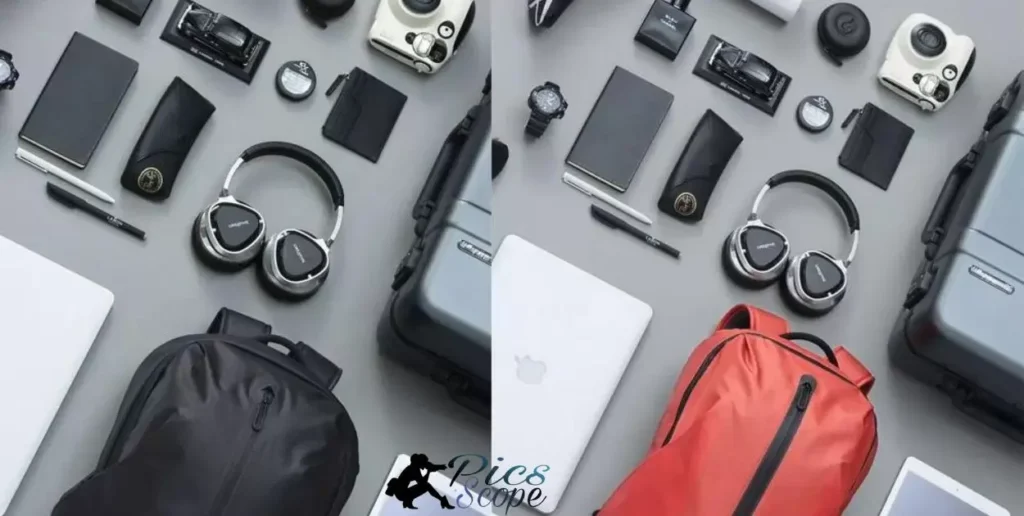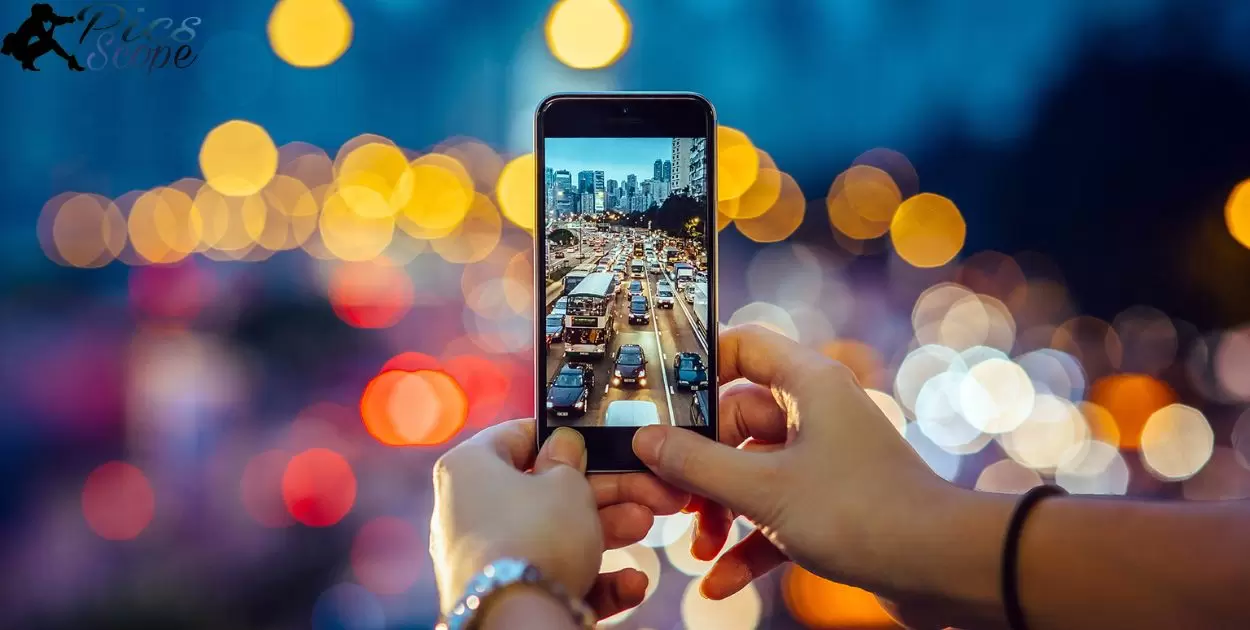Professional pictures with a phone are high-quality images captured with the camera on a smartphone. They look as good as photos from an actual camera. Professional phone pictures have nice colors, lighting, composition and clarity.
How to take professional pictures with a phone?” Many people ask themselves this question. While smartphone cameras keep improving, it can still be a challenge to take photos that don’t look like average phone pics. But with some simple techniques almost anyone can capture share-worthy shots without carrying a separate camera.
To take professional pictures with your phone, focus on a few tips. Make sure to hold the phone steady and avoid blurry shots. Pay attention to natural lighting and take photos in bright areas. Get close to your subject for sharp details. Experiment with different angles and frames until you capture the best perspective.
Mastering Mobile Photography
To master mobile photography, you must practice regularly. Take your phone with you wherever you go to capture spontaneous photos. Do not worry about getting the perfect shot at first. With time and experience, you will learn your phone’s capabilities.
Review the photos you take to see how you can improve. Examine lighting, composition, and other elements. Think about what you could do differently next time. Mastering mobile photography is an ongoing process, but you will be amazed at the stunning shots you can take with just a phone.
Understanding Phone Photography Fundamentals
There are some basic fundamentals to understand for phone photography. Learn about lighting, composition, and different shooting modes. Play with settings like lighting, color, contrast and focus. Understanding how to use these fundamentals will make you better at capturing great photos.
The most important fundamental is composition. Learn rules like rule of thirds and leading lines to improve visual balance in your shots. Strong composition can elevate an average photo to a professional one. Mastering the fundamentals will allow you to take better mobile photos.
What Makes a Good Mobile Photography Composition?
A good composition tells a story and draws the eye. It should have a clear subject and deliberate framing and placement within the viewfinder. Breaking the frame space into thirds can create a balanced layout. Place your subject off-center for more impact.
Leading lines also create flow and energy in an image. Look for diagonals, curves or any elements that guide the eye naturally. Play with perspectives by shooting from above or below your subject. Unique compositions make photos stand out on mobile phones.
How to Use Natural Light for Flawless Mobile Photos

Use natural sunlight whenever possible for mobile photos. Photos taken in open shade or indirect bright light will have soft even lighting. Direct midday sun can create harsh shadows and squinting subjects. Early morning and late afternoon light is warm, soft and flattering.
Pay attention to the direction of the light source. Position your subject side-lit or backlit for beautiful portraits. Built-in phone flashes typically create unflattering shadows. Learn to use natural light conditions to your advantage instead of artificial lights.
Mobile Photography Techniques: How to Frame Your Shots Effectively
Proper framing allows you to effectively direct attention within photos shot on mobile. The following table outlines some important techniques for composing engaging shots through framing:
| Mobile Photography Framing Techniques | Description |
| Fill the frame | Get close to remove distractions and concentrate on the subject |
| Try different crop aspects | Experiment with portrait and landscape formats |
| Vary angles | Shoot from high or low perspectives for unique framing |
| Use foreground elements | Layer objects to add context and pull viewers’ eyes into the shot |
| Break the frame | Place subjects off-center for impactful compositions |
| Lead with lines | Diagonals and curves guide the eye naturally through the frame |
Does Phone Camera Quality Matter for Photography?
While better camera hardware improves mobile photos, phone photography is more about technique than pixels. Newer phones take great low-light shots but a practiced eye sees better in any light. Composition, lighting and setting impact quality more than slight sensor differences.
Many classic photos used far worse “cameras” with creative vision. Focus on fundamentals instead of chasing updates. Learn angles, timing, mood through experience. Your best pictures may surprise you by coming from an older phone on a special occasion. Creative skills transcend any device for top quality mobile images.
Using Photography Apps to Enhance Your Mobile Photos
Built-in phone editors can improve shots but photography apps add real power. Many are free or low-cost. Look for RAW editing if your phone supports it to fine-tune exposures and colors with precision. Apps with manual controls allow adjusting settings your phone misses.
Apps that simulate DSLR lenses let phones “zoom” close or wide. Special effects apps add unique filters for different moods. Stitching panoramas turns several shots into wide landscape views. Sharing apps simplify uploading favorites to social platforms beautifully framed. Leverage apps to extend your phone’s creative toolbox for expressive photos.
When Should You Use Photography Modes on Your Phone?
Automatic mode takes great casual photos but switching up modes empowers you. Portrait mode blurs backgrounds for crisp subject focusing. Use low light mode in dim indoor settings for brighter handheld shots. Macro lets capture details up close like water droplets.
Action/sports mode minimizes blur in motion. Night mode extends dark exposures without a tripod. Play with these modes! Beach vacations call for landscape ratio vs tight portrait shots of hikers. Familiarizing yourself with modes lets you optimize for any scene quickly.
How to Take Close-Up Mobile Photos Like a Pro
To shoot close-ups, engage macro mode or just move in very near your subject. Fill the frame to convey tiny textures. Hold steady and brace your phone against a wall if possible. Natural light brightens small details better than macro flash, which tends to wash out colors.
Zooming digitally degrades quality, so zoom with your feet by stepping nearer slowly. Focus manually if possible vs letting the phone do it for higher success rates. Get dramatic abstracts by tilting or peering through common items up close with your phone. Experimenting magnifies your creativity.
Mobile Photography Settings: What ISO, Shutter Speed & Aperture Mean
At its core, mobile photography shares traits with DSLRs. ISO adjusts light sensitivity – higher ISO means more grain. Shutter speed controls motion blur – faster freezes action. Aperture sets depth of field – smaller apertures increase sharpness and depth.
Being aware of these parallels allows using tricks like lower ISO for sharp night shots, faster shutter for waterfalls, narrow aperture for landscape detail. While phones simplify the interface, understanding basic principles lets you visualize how settings impact look before capturing photos with intent.
Mastering these fundamentals takes your mobile photography strating. Have fun learning! Don’t stress technical perfection yet – focus first on seeing creatively through your phone.
Capturing Candid Photography Moments with Your Phone

Always have your phone ready to capture candid moments. Unobtrusively catch people smiling and interacting for portraits that tell stories. Turn on burst mode to photograph children playing or animals in motion. Review shots quickly and discreetly delete unacceptable photos tactfully.
Asking permission draws attention and creates unnatural poses. Bypass awkward conversations and just photograph from a respectful distance instead. Candid photos offer glimpses into people’s authentic selves and everyday lives that planned shots miss. Be mindful not to infringe privacy.
What Editing Tools Can Improve Your Mobile Photographs?
Various editing tools can help enhance the photos taken on your mobile phone. The table below outlines some commonly used editing features:
| Editing Tool | Description |
| Filters | Add stylized effects and presets to photos |
| Exposure tools | Adjust lighting, shadows, highlights and brightness |
| Cropping | properly frame and compose images |
| Red-eye removal | Fix red eyes from flash photos |
| Blemish editor | Conceal flaws or distractions |
| Color adjustments | Balance and fine-tune vibrancy and hues |
| Brush tools | Selectively lighten or darken specific areas |
| Manual settings | Tweak ISO, white balance, saturation etc. |
Landscape Mobile Photography: How to Shot Stunning Scenery

For landscape shots, aim for sunrise or sunset for warm ambient lighting. Look for framing elements to create visual interest and lead the eye around the scene. Get low to include sky and land evenly within the frame.
Explore your surroundings slowly. Approach a scene from different angles to find the most impactful composition. Use landscape orientation for wide vistas. Consider mounting your phone to steady longer exposures for silky water or light trails. With practice, capture nature’s beauty.
Low Light Mobile Photography: A Few Tricks That Really Work
In low light, lower ISO to reduce grain, keep a steady grip, and enable night mode if available. Rest the phone on a steady surface or use a tripod for sharp handheld shots under one second.
Backlit subjects preserve shadow details better than flash, which creates harsh lighting. Get close to minimize visible noise. Night mode composes multiple shots for a perfectly lit photo. With care, low light shots no longer need to be dark and blurry.
How to Do Street & Urban Photography on the Go
Strap on a phone grip or purse for one-handed shooting stability while exploring streets. Notice abstract shapes and patterns in sidewalks, architecture and infrastructure for unique angles.
Seek out everyday scenes with or without people. Zoom beyond facades to environmental portraits within. Be respectful shooting people by keeping a distance and deleting unacceptable shots privately later. Urban landscapes bring any city to life through a mobile lens.
Taking Professional People Photography with Your Phone
For great portraits, find plentiful soft natural lighting like open shade. Encourage subjects to act naturally by making them comfortable. Frame faces loosely within the viewfinder with some breathing room.
Suggest poses that show personality, not just headshots. Guide subjects’ eyes toward the camera lens by tapping the screen slightly above it. Burst shoot to guarantee sharpness. Candid portraits look relaxed while composed shots please people.
Food Photography Ideas for Mouthwatering Mobile Shots
Present food attractively by styling components artistically on contrasting surfaces. Overhead angles make colors pop while varying perspective engages viewers.
Zoomed details capture textures. Natural light highlights luster. Edit photos consistently for cohesive shares. With some creatively captured food photos, chances grow to feature your shots for restaurants or blogs. Bon appétit!
Event & Occasion Mobile Photography Tips for Any Party
- Photograph party setups, decorations and backgrounds before guests arrive
- Wander and mix with guests to capture candid shots discreetly
- Capture environment portraits of socializing groups from different angles
- Back up photos regularly to free space for more shots throughout the event
- Get detail shots of food, drinks and other highlights on attractive surfaces
- Frame shots loosely within the viewfinder while still filling the frame
- Burst shoot when capturing groups or action shots to ensure good shots
- Adjust camera settings according to lighting conditions inside venues
- Edit photos consistently for a cohesive collection to share from the event
- Blend in while photographing to avoid interrupting the atmosphere
- Prioritize shots of people enjoying themselves over staged posed pics
Should You Invest in Mobile Photography Accessories?

While capable on their own, phone cameras excel with helpful gear. Tripods steady low light shots. Lens attachments like fisheye or wide-angle offer uniqueness.
Grips perfect one-handed stability. Secondary lenses clip sleeves for zoom versatility. Waterproof cases enable underwater adventuring. Flash accessories prevent shadowy candids. Mobile light panels produce soft illumination indoors.
Select quality accessories for your needs. Affordables exist without breaking the bank. Investing enhances creative options and protects phones to keep the art flowing.
Uploading and Sharing Your Best Mobile Photographs
Edit shots on your phone then batch upload favorites to your computer. Post top images to social networks or your website with crafted captions.
Touch up photos in Photoshop Express first if needed. Learn search engine optimization basics to reach wider audiences. Consider photo books, posters, or cards to showcase your mobile photography in homes.
Submission to local businesses, blogs or contests spreads artistic recognition. Don’t underestimate the professional quality possible from phone pictures with practice and promotion.
FAQ’s
How do I take professional quality pictures with my phone?
Focus on lighting, composition, and editing your photos.
Can you take professional photos with a smartphone?
Absolutely, with the right techniques even basic phones can take stunning shots.
How can I use my phone as a professional camera?
Play with different modes, adjust settings manually when possible, and consider phone cameras.
How do I hold my phone to take good pictures?
Steady your touch using both hands, prop or brace against stable surfaces when possible.
What settings should I use on my phone for the best pictures?
Check lighting, lower ISO in night shots, boost resolution, and tweak brightness/saturation in editing apps.
Conclusion
In conclusion, with some practice anyone can learn to take professional pictures with their phone. While phone cameras continue improving, a photographer’s eye and creative techniques matter most. Following tips around composition, lighting, modes and editing empowers anyone to turn average snapshots into meaningful art.
Most importantly, explore your own personal style and vision. Photograph what inspires you – whether scenic landscapes, people, events, or everyday moments. With an artistic eye and passion and commitment to learning fundamental skills, any phone holds potential for beautifully expressive professional pictures. Pursue mobile photography as a rewarding hobby or creative passion.







